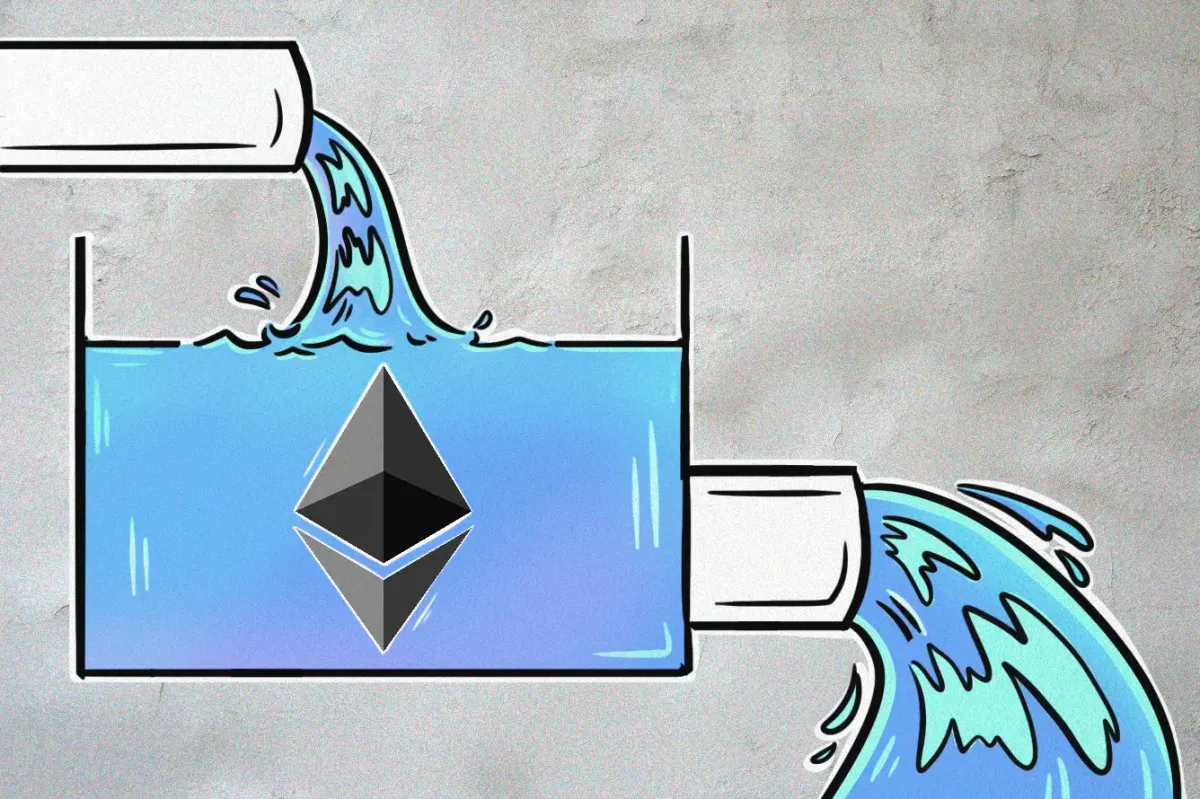
Ethereum has re-entered a deflationary phase, with its supply reaching its lowest point since the Shanghai upgrade. This decline is attributed to the recent market surge and increased on-chain activity, which has led to the burning of over $58 million in ETH since November. Since the Shanghai upgrade, more than 312,000 ETH (around $173 million at the current prices) has been burned, reducing the current supply to around 120.2 million ETH.
The peak ETH supply was around 120.5 million in March 2020. Forecasts now suggest a continued decrease in supply, potentially reaching about 117.7 million by 2025. This positive trend towards a lower supply is intricately tied to the overall adoption and activity on the Ethereum blockchain.
A decrease in network activity could lead to higher inflation, affecting this supply dynamic. As illustrated in the chart below, the rate of ETH burning was slower during the summer months. Furthermore, in September and October, there was actually a growth in the ETH supply.
Source: ultrasound.money
In the past 30 days, notable contributors to Ethereum’s supply burn include Uniswap and two sniping bots, Banana Gun and Maestro. Interestingly, trading of meme-coins on Uniswap has accounted for a significant portion of the supply burn. While most meme-coin projects tend to be scams, they paradoxically bring some benefit by boosting Ethereum’s activity and contributing to the token burn.
Source: ultrasound.money
Other noteworthy smart contracts contributing to ETH burn include Layer 2 protocols such as Linea, Arbitrum, Optimism, and StarkWare. This trend is further fueled by a significant migration of users to Layer 2 solutions, as rising activity on Ethereum has made fees a major concern. Transaction costs such as $20 for transfers and $50 for swaps have become too burdensome for the majority of users.
In fact, during the third quarter, the majority of activity on Ethereum occurred on its Layer-2 networks. Already, platforms like Arbitrum, Optimism, and Base process more daily transactions combined than Ethereum’s Layer 1. The launch of more L2s, coupled with potentially higher network fees in a positive market, is likely to further accelerate user migration to L2s.
Source: dune.com
The Shanghai upgrade appears to be achieving its intended effects. Ethereum’s transition to a deflationary model is successfully reducing its supply, which in turn supports the cryptocurrency’s price. Furthermore, as network activity increases, this should further propel ETH’s growth by intensifying the rate at which tokens are burned.

